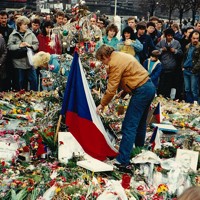Two decades of unprecedented political, economic and social transformations in Eastern and Central Europe have produced outcomes that were hardly expected when the region emerged from communist rule. Despite initial pessimism about the prospect of establishing liberal democracy, several countries have developed consolidated democratic systems, functioning market economies and efficient democratic states with extensive welfare policies and relatively low inequality. Similarly, although there were well-founded doubts as to whether East European civil societies would ever be able to recover from decades of communist suppression, vibrant free media and well-organized associational life have emerged there as well. These countries are not much different from established Western European democracies. In Central and Eastern Europe, democratically elected governments presided over impressive economic modernization and registered years of solid economic growth. While new member states of the European Union were considered the most economically vulnerable and crisis-prone, they have been weathering the current financial crisis relatively well -- except perhaps for Hungary and Latvia -- and their budget deficits and public debt are among the lowest in the EU.
Yet, these countries’ political and economic achievements have been in stark contrast to the failures seen in other postcommunist states. Despite initial hopes and real political gains, a majority of these countries have either returned to authoritarianism, albeit of a different sort, or have persisted in a semireformed and unconsolidated state. While capitalism reins supreme across the former communist space, in too many places it has evolved into a state-dominated, corrupt and oligarchic system. As a result, the distance between Central Europe’s new EU members and others has been growing, and the economic, social and political differences among subregions of the former Soviet bloc have become entrenched. The region is divided today between increasingly prosperous and democratic East-Central Europe; the struggling Balkans, which despite significant progress still lag behind on almost all dimensions; Eastern Slavic countries uneasily balancing between political instability and authoritarianism; and Central Asian countries still caught in the firm grip of autocracy.
These outcomes have been fixed since the end of the 1990s and further sealed by Vladimir Putin’s re-election as Russian president in 2004 as well as the accession of eight East-Central European countries to the EU the same year. Not much has changed politically since then, despite “color revolutions” aimed at restoring liberal commitments in several backsliding states. With further enlargement of the EU highly unlikely, the border between the new EU member states and other postcommunist countries has become hard and permanent. In short, a new political and economic geography has emerged. A region remembered for its drab uniformity under communism has returned to a diversity that, paradoxically, looks like a trip back in time. What are the sources of such divergent paths, and why have some countries succeeded while others failed to build liberal political and economic institutions? This article will offer some answers to these questions.

